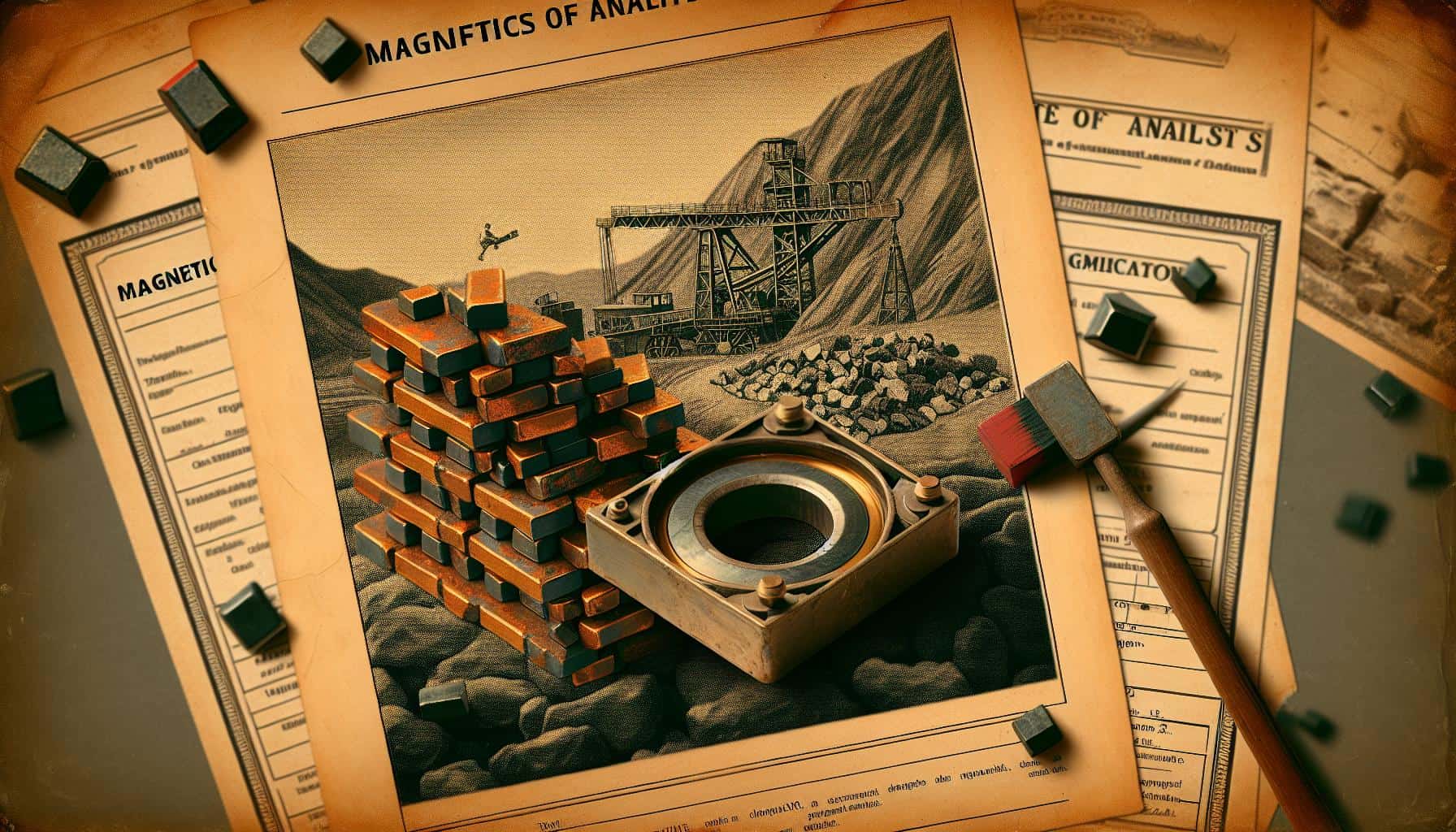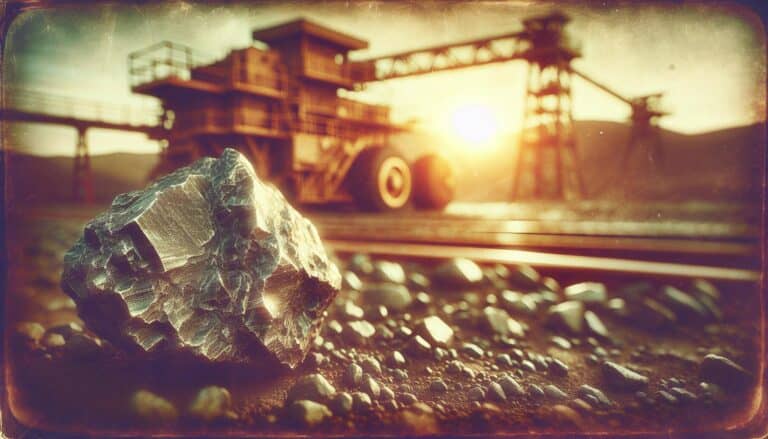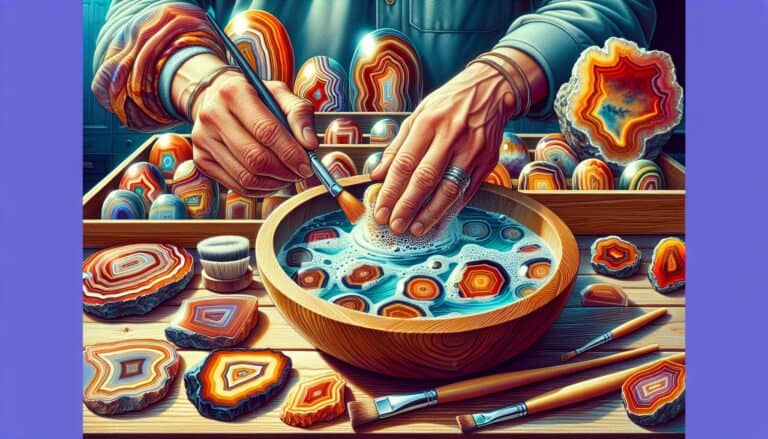You’re probably curious about magnetite, the magnetic mineral that’s caught the eye of collectors and industrial buyers alike.
It’s not just its magnetic properties that make it a hot commodity; its uses in various industries from construction to medicine add to its allure.
But what’s the real value of magnetite? It’s a question that crosses the minds of investors, geology enthusiasts, and the simply curious.
As you dive into the world of this fascinating mineral, you’ll uncover the factors that influence its worth and why it’s more than just a rock.
Magnetite’s value is influenced by purity, color, and industrial demand. Key uses include steel production and dense media separation, with top-grade magnetite prized for its high iron content and magnetic properties. Prices vary by quality, market trends, and rarity. Ensure authenticity and suitability for specific needs before purchasing.
What Is Magnetite?
Magnetite is an iron oxide mineral, one of the main iron ores and is distinguished by its strong magnetic properties. Iron (II,III) oxide, or Fe3O4, is the chemical formula that represents this balanced mix of ferrous (Fe^2+) and ferric (Fe^3+) ions. It’s usually black or brownish-black with a metallic luster and has a Mohs hardness ranging from 5.5 to 6.5, making it quite durable.
To understand magnetite, you should know that it’s the most magnetic of all the naturally occurring minerals on Earth. Found in igneous, metamorphic, and sedimentary rocks, your discovery of magnetite could occur during a hike, near mining operations, or when involved in a commercial excavation for construction materials. Geologists even use it to track past geomagnetic reversals due to its magnetism.
- Source Locations: Prominently found in the USA, Sweden, South Africa, and Australia.
- Appearance: Octahedral, fine granular to massive.
- Magnetic Properties: Ferrimagnetic, which makes it a permanent magnet.
These magnetic characteristics are what make magnetite useful in various industrial applications. From magnetic resonance imaging (MRI) machines in medicine to magnetic inks in the printing industry, its range of uses is broad. In construction, magnetite’s density and magnetic nature facilitate heavy media separation and coal washing—processes that help to purify coal and extract other valuable minerals.
The demand for magnetite continues as technology advances. It’s sought after for its potential in data storage, as nanoparticles in biomedical applications, and even for environmental remediation. As you dive deeper into the world of magnetite, you’ll find that its value stands firmly on the many roles it plays in modern society, all thanks to its unique properties.
Magnetite Prices: Factors That Affect Value
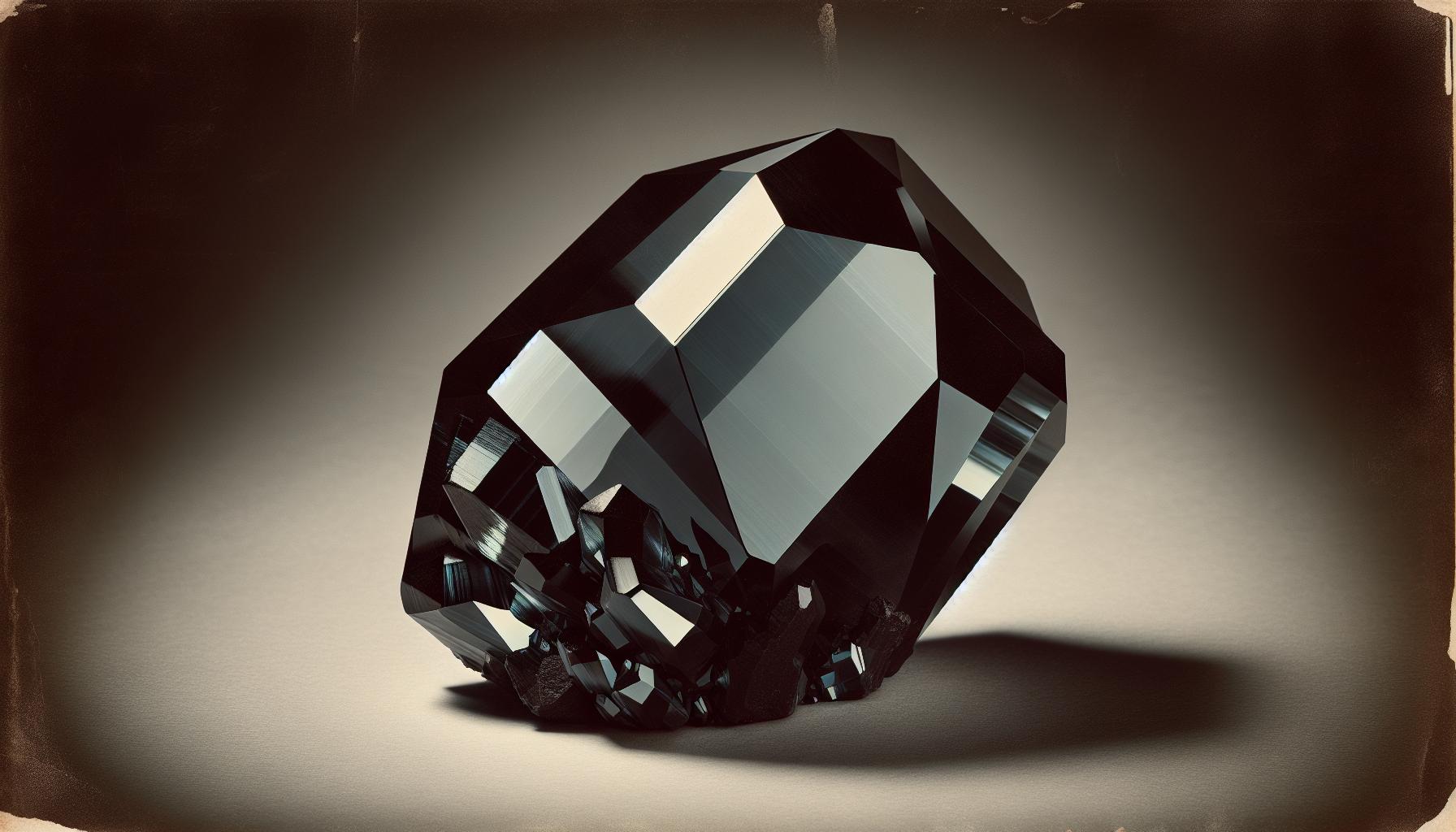
When exploring the worth of magnetite, it’s essential to understand the numerous elements that can impact its value. Like other minerals, magnetite’s price is not fixed and fluctuates based on several key factors. By understanding these variables, you can better assess the market and the potential investment value of magnetite.
Color, Clarity, and Cut Quality
The aesthetic qualities of magnetite, such as color, clarity, and cut quality, play significant roles in determining its value.
- Color: The most sought-after magnetite is a deep, jet black color. This variant is not only rare but also in high demand for various decorative and jewelry uses.
- Clarity: Even though magnetite is generally opaque, its clarity in terms of absence of impurities can affect its price, especially when used in applications where purity is a concern.
- Cut Quality: For gemstone purposes, the way magnetite is cut can enhance its appeal. A well-cut stone might reveal an appealing luster and shape, which adds to its value.
Market Demand and Availability
Magnetite’s price is also influenced by the basic economic principles of Market Demand and Availability. Prices typically rise when demand exceeds supply and fall when there is an oversupply. The factors affecting these dynamics include:
- Industrial Demand: Given magnetite’s role in steel production and heavy media separation, industrial demands can sharply increase its value.
- Technological Applications: As technology evolves, so does the need for magnetite in various high-tech applications, which can lead to price spikes.
- Geographic Availability: The locations where magnetite can be mined play a part in its availability, and thus, its price. Areas with richer deposits may yield lower costs due to ease of extraction.
- Regulatory Factors: Government regulations can impact mining operations, potentially constraining supply and pushing prices upward.
The fluctuation in magnetite’s worth is closely tied to these elements, and staying informed about market trends is crucial for anyone interested in investing or using this powerful magnetic mineral.
Understanding Magnetite: A Rare Gem
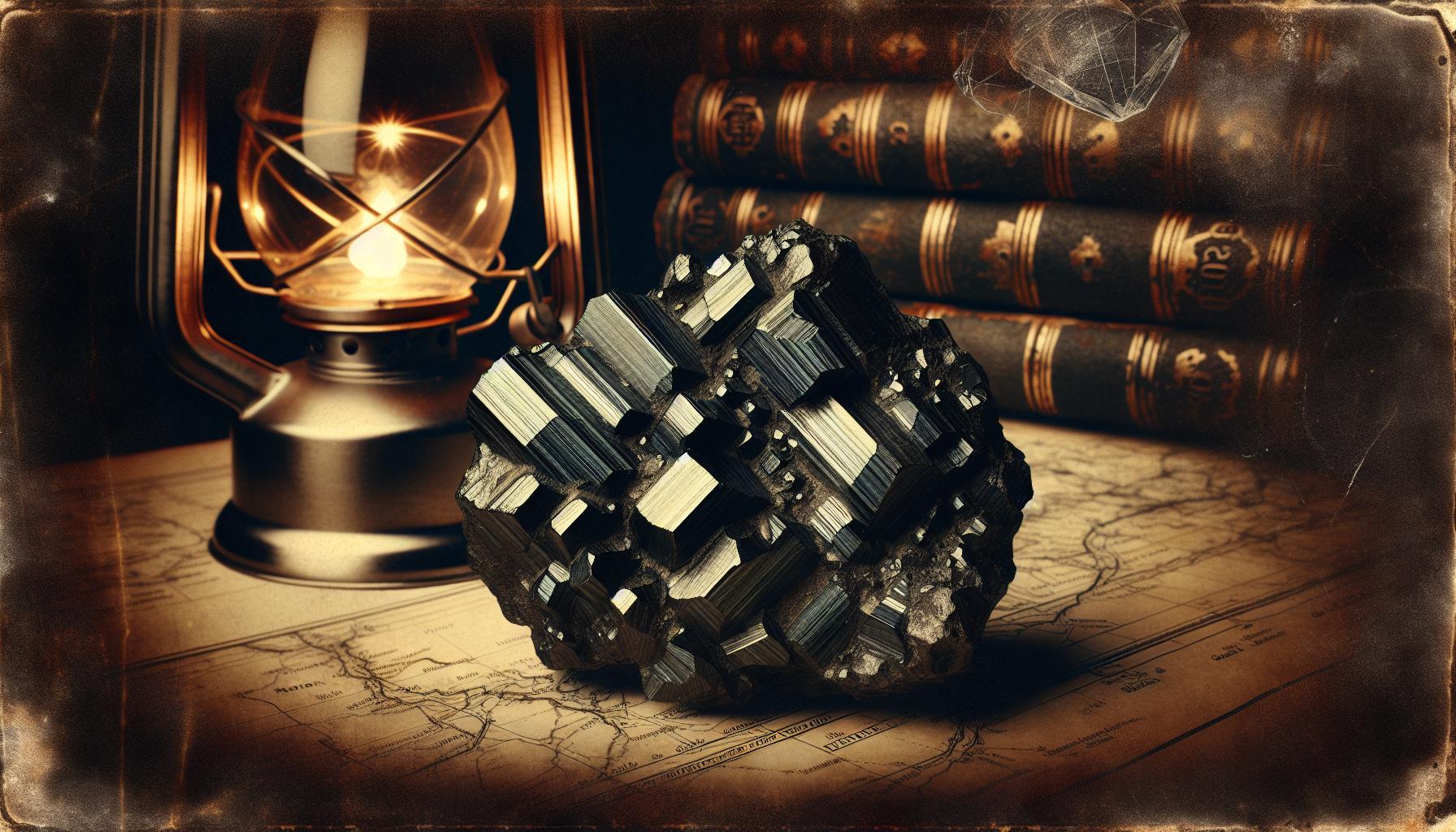
When you’re delving into the world of minerals, magnetite stands out due to its unique properties and notable rarity. This section explores why magnetite is rare and what characteristics define this intriguing stone.
The Rarity of Magnetite
Magnetite’s value is intrinsically tied to its rarity. Unlike other common minerals, high-quality magnetite sources are not as widespread. Here’s what you need to know about the scarcity of magnetite:
- Geographic scarcity: The best deposits of magnetite occur in select global locations, thus limiting availability.
- Quality disparities: Even within known deposits, finding pieces of magnetite with ideal aesthetic properties is challenging.
- Market Competitiveness: Due to its industrial uses, magnetite faces fierce competition from synthetic alternatives as well as other natural minerals.
Understanding the rarity of magnetite helps you appreciate why its value holds significance in various markets. As a collector or investor, you’ll recognize that not all magnetite specimens are created equal, and high-quality pieces can be especially valuable.
Origins and Characteristics
Magnetite’s journey from formation to discovery is a story of geological processes that span millions of years. Here are key points about the origins and characteristics of magnetite:
- Formed in multiple environments: Magnetite can develop in igneous, metamorphic, and sedimentary settings, each contributing distinct qualities.
- Magnetic properties: As a naturally magnetic mineral, magnetite stands out from other gemstones. This feature is attributed to its iron oxide composition.
- Color and lustre: Typically, magnetite boasts a metallic sheen with deep black tones, making it unique amongst minerals.
The versatility and distinctiveness in magnetite’s formation result in variations in its physical properties, which in turn affect its value. Whether it’s the magnetic allure or the unique aesthetics, knowing these characteristics can guide you when assessing the worth of magnetite specimens.
By understanding the rarity, origins, and characteristics of magnetite, you’re in a better position to navigate its market. Additionally, these insights allow you to evaluate the potential investment opportunities that magnetite presents in today’s economy. Remember to stay informed about market trends to make the most out of your interest in this remarkable mineral.
Magnetite Grading and Valuation
When you’re looking to understand magnetite’s value, it’s crucial to recognize the grading system that categorizes its quality. This grading impacts not only magnetite’s monetary worth but also its appeal to collectors and investors.
The Grading System for Magnetite
The grading of magnetite is complex, hinging on several factors that reflect its uniqueness and potential uses. Typically, experts assess magnetite based on:
- Purity: The iron content in magnetite greatly dictates its grade. Higher iron percentages are synonymous with superior quality.
- Size and Weight: Larger pieces often fetch higher prices, but exceptionally rare small specimens can be highly valuable too.
- Magnetism: One of magnetite’s key features, stronger magnetic properties can increase its attractiveness and worth.
- Physical Characteristics: Aspects like shape, color depth, and luster affect the grade. Unusual formations or striking visual traits boost its rating.
- Provenance: The specimen’s origin can add historical value, especially if it’s from a famous or exhausted mine.
These grading parameters help determine the market pricing for magnetite, guiding buyers to make informed decisions.
Certification and Appraisal
An official certification or appraisal can substantiate magnetite’s quality and authenticity, often necessary for insurance and resale purposes. A certified appraisal comes from a qualified professional who examines the magnetite based on the grading aspects mentioned previously.
Here’s what the appraisal process typically includes:
- Analysis of Physical Qualities: Appraisers closely inspect the physical properties that contribute to the stone’s grade.
- Market Evaluation: They compare the magnetite against current market conditions and recent sale prices for similar pieces.
- Documentation: A report detailing the magnetite’s attributes, grading outcome, and estimated value.
- Verification of Authenticity: Ensuring the magnetite is genuine and not a synthetic or altered piece.
Remember that while an appraisal provides an estimate of magnetite’s value, actual sales prices can vary. Factors such as collector interest, market demand, and the overall economic climate influence the final selling price. Keeping abreast of these variables is vital for anyone considering the sale or purchase of magnetite.
Current Market Trends in Magnetite Pricing
Understanding the current market trends is essential when you’re considering investing in magnetite. Supply and demand play a crucial role in determining its price, and these can be influenced by various factors such as industrial growth, mining operations, and technological advancements.
The iron and steel industry is the primary consumer of magnetite and, as such, industrial demand for steel has a direct impact on magnetite prices. With infrastructure projects on the rise globally, you can expect an increase in demand for this valuable ore, potentially driving up its price. However, volatility in the industrial sector could also result in price fluctuations.
Mining production levels also significantly affect magnetite pricing. If you’re keeping an eye on the market, you’d be mindful of the operational status of major mines. A disruption in one area can constrain the supply, causing prices to climb. Conversely, the discovery of new mining sites or advancements in extraction technology can increase supply and stabilize or decrease prices.
Technology plays a role, too. As newer, more economical methods of extracting magnetite are developed, production costs lower and this can be reflected in market prices. The ongoing push for environmentally friendly mining practices could also influence the market, potentially increasing costs and, in turn, prices for end users.
Market data from the past year illustrates the ebb and flow of magnetite prices. Consider the following table, demonstrating quarterly price changes:
| Quarter | Price Range (USD/ton) | % Change |
|---|---|---|
| Q1 | 100-150 | – |
| Q2 | 120-170 | +15% |
| Q3 | 115-165 | -3% |
| Q4 | 125-180 | +8% |
Keep track of these trends to see how market sentiment and industrial achievements influence prices. Speculations about the future of the building sector and anticipated innovations in steel processing can provide additional insight into where magnetite pricing might head.
It’s also worth looking at geopolitical factors. Trade policies, import-export tariffs, and international relations can create ripple effects through the market. Staying updated on global events that may influence trade can give you an edge in predicting future price movements.
The Most Expensive Magnetite
When exploring the value of magnetite, you’ll find that high-grade magnetite commands a premium in the marketplace. The most expensive magnetite is often characterized by its exceptional purity, which makes it extremely desirable for various high-end applications, including dense media separation and magnetite nanoparticles.
Factors That Drive High Prices
Several key factors contribute to the high cost of top-tier magnetite:
- Purity Levels: The higher the iron content, the more valuable the magnetite. Specimens with over 70% iron content are particularly sought after by industries.
- Rarity: Unique magnetite deposits with distinctive properties or historical significance can fetch higher prices.
- Processing Requirements: Extraction and processing techniques required to achieve this level of quality can be extensive and costly.
Premium Applications
Magnetite’s most lucrative uses that justify its high price point include:
- Biomedical uses: Due to its magnetic properties, pure magnetite is essential in medical diagnostics and targeted drug delivery systems.
- Advanced Electronics: Magnetite is used in producing high-density storage media and other sophisticated electronic components.
- Clean Energy: With the push for greener technologies, magnetite plays a critical role in the development of magnetic refrigeration systems.
Investing in high-grade magnetite can be a strategic move given its applications in cutting-edge technology and growing demand in innovative industries. It’s not just the current uses but the potential for future applications that keep investors’ eyes on the magnetite market. As advancements in technology continue to arise, the ceiling for magnetite’s value may push even higher. You should keep an eye out for new developments as they can rapidly influence the worth of this versatile mineral.
Buying Magnetite: Tips and Recommendations
Before splurging on magnetite, it’s critical to know where and how to buy the mineral to ensure you’re getting the best value for your money. With the right approach, you’ll find quality magnetite that serves your needs, be it for industrial applications or for collection purposes.
Where to Purchase High-Quality Magnetite
To ensure you’re buying high-quality magnetite, it’s crucial to source from reputable suppliers. Typically, these vendors are connected to the mining industry and have direct access to the materials. They’ll provide various grades of magnetite, each suitable for different uses. Here are some options:
- Mining Companies: Purchase directly from mines if possible. They offer raw magnetite, often in bulk, which can be ideal for industrial use.
- Specialty Online Retailers: For smaller quantities or more refined magnetite, look for online stores specializing in minerals and geological specimens.
- Trade Shows and Expositions: These events are perfect for connecting with numerous suppliers, seeing the product firsthand, and negotiating prices.
When seeking suppliers, it’s paramount to conduct thorough research. Read reviews, compare prices, and ask for references. Always prioritize those with transparent sourcing practices.
Ensuring Authenticity and Value
The magnetite market is no stranger to counterfeit products. Protect yourself by familiarizing with methods to verify authenticity:
- Magnetic Testing: Genuine magnetite exhibits strong magnetic properties. Use a simple magnet test to check the authenticity.
- Certification: Ask the seller for a certificate of analysis to confirm the magnetite’s composition and quality.
- Know Your Grades: Understanding the grading system for magnetite will help you determine if the price quoted is fair for its quality.
- Sample Before Bulk Buying: If planning a significant purchase, request a sample to assess the quality.
Here’s what you should keep in mind when evaluating magnetite:
| Criteria | Why It Matters |
|---|---|
| Purity Levels | Higher purity often means higher prices due to the more intensive processing required. |
| Size and Morphology | Smaller particles or unique shapes may be more valuable for specific applications. |
| Place of Origin | Certain regions are known for producing higher quality magnetite. |
Invest time in vetting vendors and verifying the quality of the magnetite, and you’ll be well on your way to making an informed purchase. Remember, the cost of magnetite is directly related to its purity and the processes it has undergone, so price should not be your only consideration. Value is perceived in the application; therefore, match the grade of magnetite to your specific need to make a wise investment.
Conclusion: Buying & Selling Magnetite
Remember, when you’re in the market for magnetite, the true worth of this magnetic mineral goes beyond its price tag.
It’s about the quality and suitability for your specific needs. You’ve got the know-how to navigate the market, from sourcing to testing. Armed with this knowledge, you’re set to make a purchase that’s as solid as the mineral itself. Trust in your ability to identify authentic, high-grade magnetite and feel confident in your investment. Whether it’s for industrial use or for your collection, the value you get should reflect the effort and insight you put into the buying process.
Now go ahead and secure that magnetic treasure with the assurance that you’re making a smart, informed decision.

